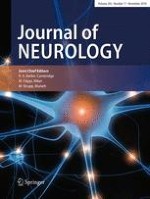Published in:

01-11-2018 | Original Communication
Quality of life in a German cohort of Parkinson’s patients assessed with three different measures
Authors:
M. Balzer-Geldsetzer, J. Klotsche, R. Dodel, O. Riedel, LANDSCAPE Consortium
Published in:
Journal of Neurology
|
Issue 11/2018
Login to get access
Abstract
Background
Parkinson’s disease (PD) is characterized by severe motor and non-motor symptoms reducing patients’ quality of life (QoL). Instruments have been well established for QoL assessments in PD, including the EuroQol (EQ-5D), the Parkinson’s disease questionnaire (PDQ-39), or rather uncommon, like the WHOQOL-100. So far, the impact of variables has been investigated for each of these measures separately in different study populations, limiting the comparability of the results. Thus, this study compared the EQ-5D, PDQ-39, and the WHOQOL-100 (with its short-form WHOQOL-BREF) in the same study population.
Methods
Seventy-five PD outpatients were assessed in a prospective study, including disease severity according to Hoehn and Yahr stage (HY) and Unified Parkinson Disease Rating Scale (UPDRS). The Geriatric Depression Scale (GDS-15) screened for depression.
Results
Decreased QoL was found with all three instruments. In multivariate models, sex and treatment complications had an impact on QoL according to all three measures, while duration of PD and HY was not associated with QoL in any of them. Depression was relevant for the WHOQOL-100/WHOQOL-BREF and the PDQ-39, but not for the EQ-5D. The total variances explained by the WHOQOL-100, WHOQOL-BREF, PDQ-39, and the EQ-5D were 0.27, 0.34, 0.70, and 0.50, respectively.
Conclusions
The associations between clinical aspects of PD and QoL vary substantially among all three measures. Importantly, depression as a frequent comorbidity in PD is underestimated by the EQ-5D, but not by the PDQ-39 and the WHOQOL-100/WHOQOL-BREF. In turn, motor impairments are underestimated by the latter and associated strongest with QoL in the EQ-5D.